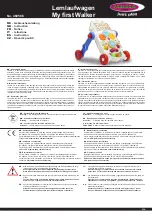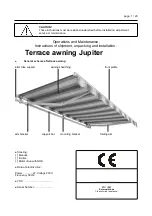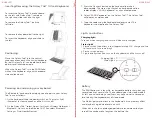
EC-20, EC-10 and EC-5 User’s Manual
3. Installing the Sensors
8
3. Installing the Sensors
When selecting a site for installation, it is important to
remember that the soil adjacent to the sensor surface has
the strongest influence on the sensor reading and that
the sensor measures the
volumetric
water content.
Therefore any air gaps or excessive soil compaction
around the sensor can profoundly influence the read-
ings. Also, do not install the sensors adjacent to large
metal objects such as metal poles or stakes. This can
attenuate the sensor’s electromagnetic field and
adversely affect output readings. Because the EC-5 has
gaps between its prongs, it is also important to consider
the size of the media you are inserting the sensor into. It
is possible to get sticks, bark, roots or other material
stuck between the sensor prongs, which will adversely
affect readings. Finally, be careful when inserting the
sensors into dense soil, as the prongs will break if exces-
sive sideways force is used when pushing them in.
Procedure
When installing the EC-20, EC-10 and EC-5, it is best to
maximize contact between the sensor and the soil. There
are two methods to accomplish this.
For the EC-10/EC-20:
1. Use Decagon’s Installation Kit to install the sensor.
This kit has a custom-shaped blade to make the
insertion in the soil, then another tool to place the
sensor into the insertion. For deeper installations,













































